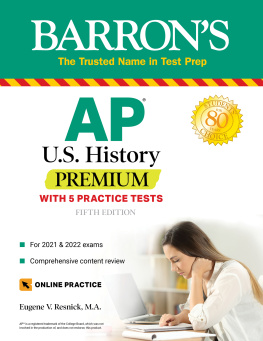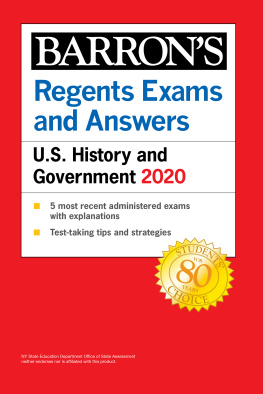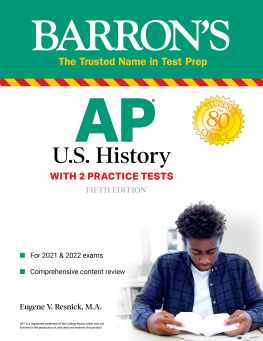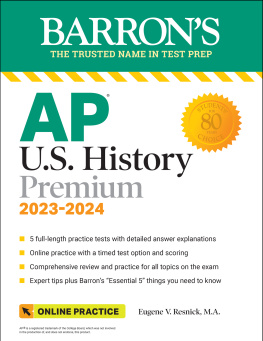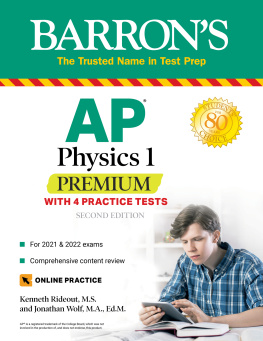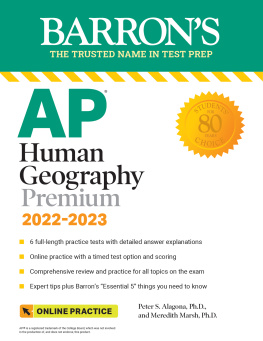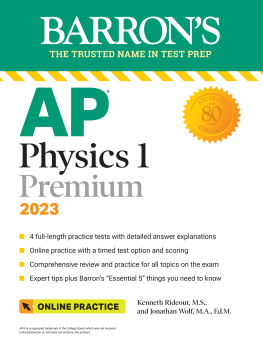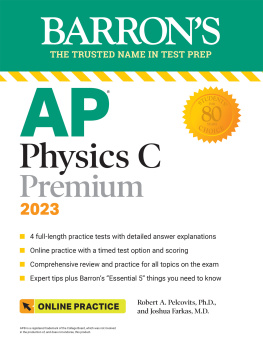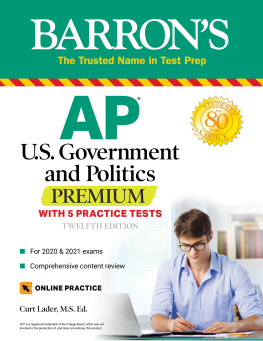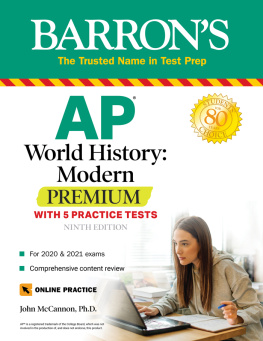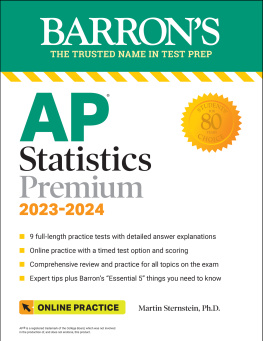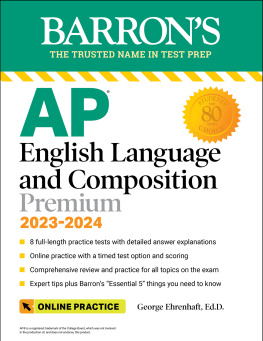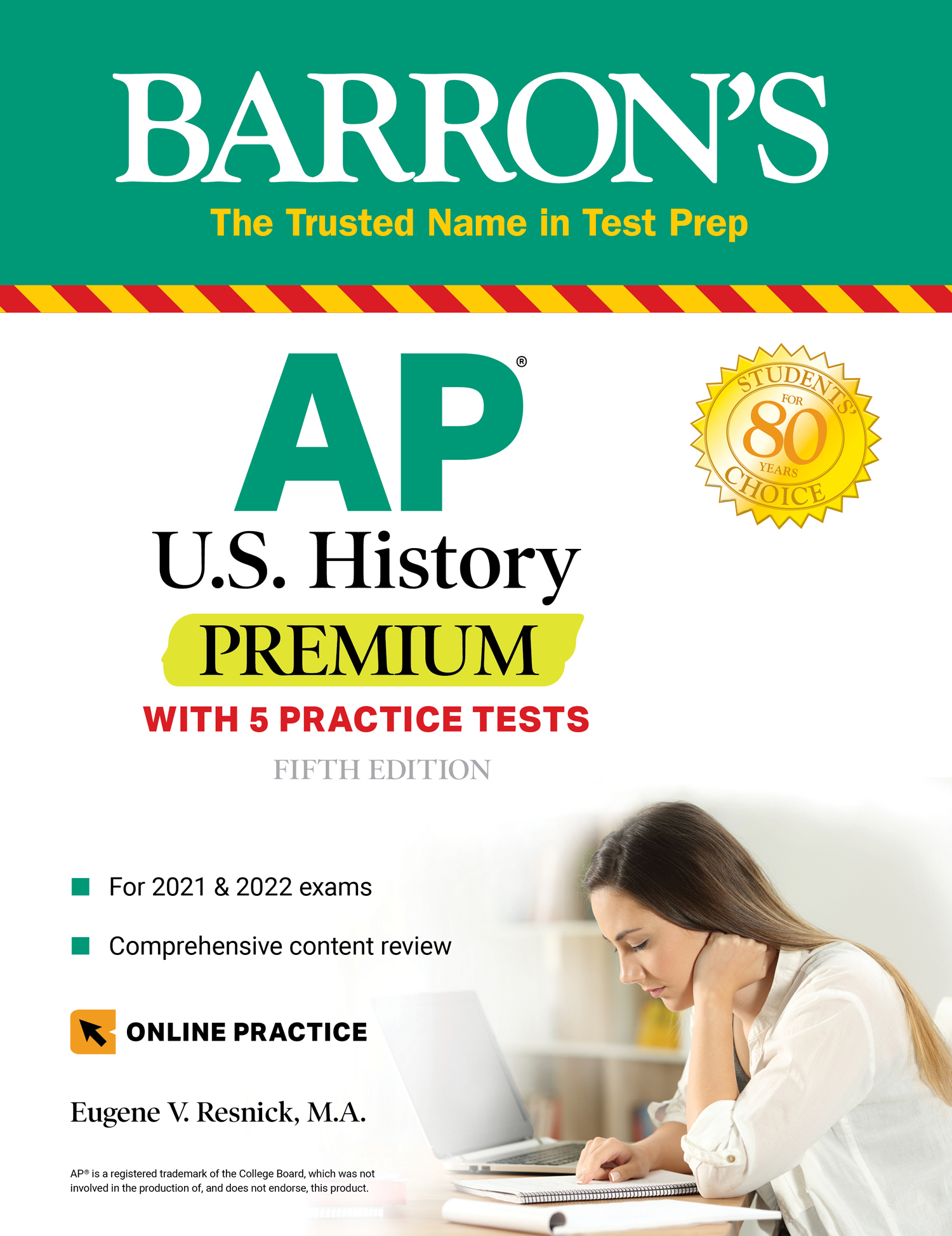Barrons
AP
United States
History
PREMIUM
WITH 5 PRACTICE TESTS
FIFTH EDITION
Eugene V. Resnick, M.A.
Midwood High School
Brooklyn, New York
*AP and Advanced Placement Program are registered trademarks of the College Board, which was not involved in the production of, and does not endorse, this product.
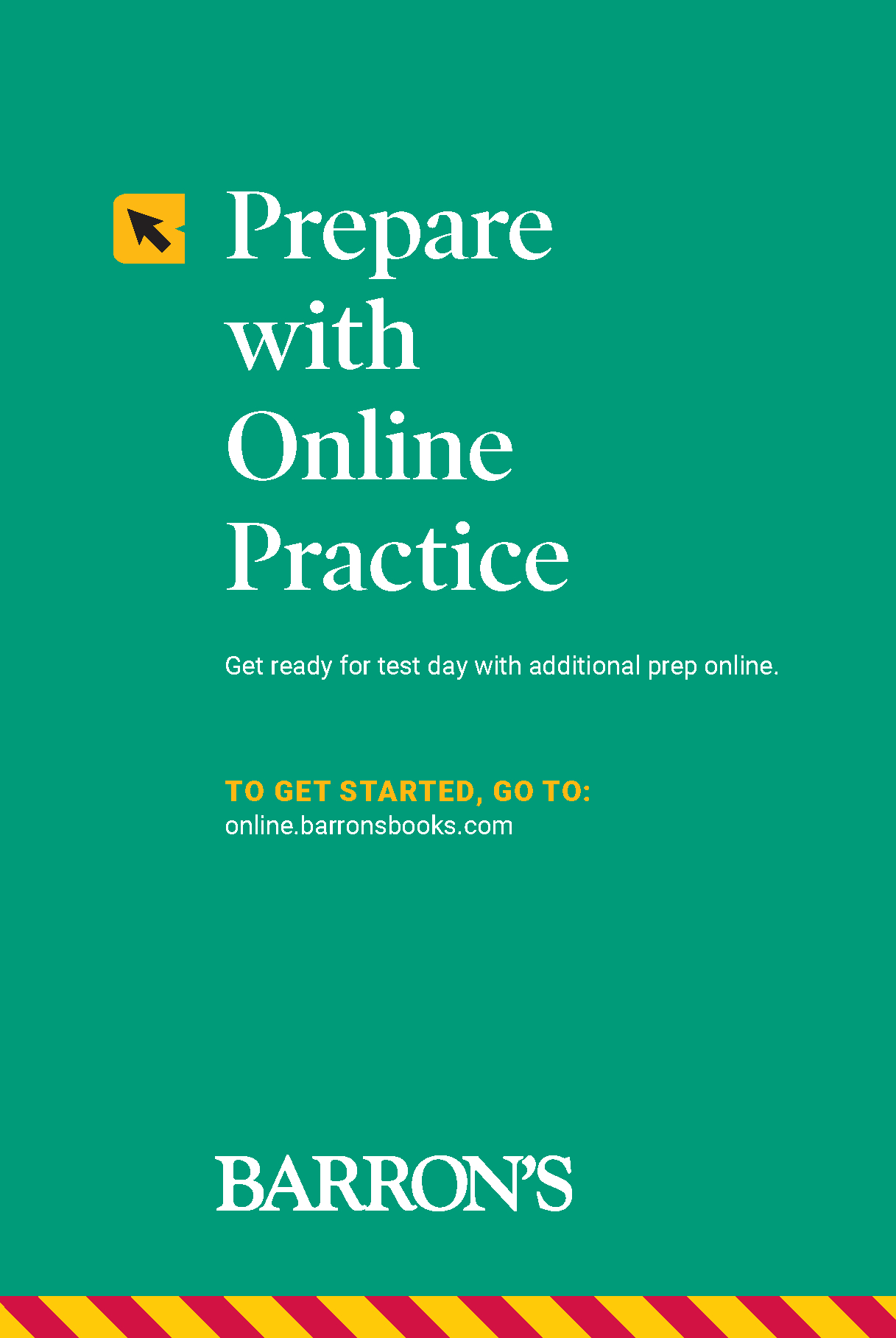
Copyright 2020, 2018, 2016, 2014, 2012 by Kaplan, Inc., d/b/a Barrons Educational Series
All rights reserved under International and Pan-American Copyright Conventions. By payment of the required fees, you have been granted the non-exclusive, non-transferable right to access and read the text of this eBook on screen. No part of this text may be reproduced, transmitted, downloaded, decompiled, reverse engineered, or stored in or introduced into any information storage and retrieval system, in any form or by any means, whether electronic or mechanical, now known or hereinafter invented, without the express written permission of the publisher.
Published by Kaplan, Inc., d/b/a Barrons Educational Series
750 Third Avenue
New York, NY 10017
www.barronseduc.com
ISBN: 978-1-5062-7094-4
About the Author
Eugene V. Resnick has taught in the Social Studies Department at Midwood High School in Brooklyn, New York, over 28 years; he has taught AP United States History for 20 of those years. He received a Masters degree in United States History from Brooklyn College.
Acknowledgments
I would like to extend my gratitude to Sharone David for her invaluable editorial assistance and guidance, to Mark Willner, Joe Peters, and Danielle Shapiro for their assistance with this project, and to my colleagues, past and present, at Midwood High School, who have provided me with advice, feedback, and inspiration. In addition, I would like to thank the many students who have taken my Advanced Placement United States History class; I have learned much from them. Finally, many thanks to the staff at Barrons Educational Series. I am deeply indebted to Stuart Murray and John Evans for their excellent copyediting work, and to the outstanding editorial work of Peter Mavrikis, Kristen Girardi, and Christine Ricketts . This book is dedicated to two excellent teachers, my sisters, Naomi Schwartz and Ruth Resnick Johnson.
Barrons Essential 5
As you review the content in this book and work toward earning that on your AP U.S. HISTORY exam, here are five things that you MUST know above everything else.
- How to think like a historian. The questions on the AP U.S. History exam are all built around historical thinking skills and reasoning processes. The College Board has identified six historical thinking skills and three reasoning processes that are central to the exam and to the broader field of history. The six skillsdevelopments and processes, sourcing and situation, claims and evidence in sources, contextualization, making connections, and argumentationencourage you to develop the habits of mind required for a critical examination of the past. The three reasoning processescomparison, causation, and continuity and changefocus on constructing and evaluating historical arguments about the past. These skills and processes encourage students to go beyond memorization and to engage with the past in complex and sophisticated ways.
- How to read documents. Documents are the building blocks of history and are central to the AP exam. All of the multiple-choice questions and the short-answer questions are built around primary or secondary documents. In addition, the document-based essay question asks you to analyze a series of documents as you construct a response to the question. Focus on how documents relate to the question and on how documents often relate to one another. Remember that historical documents contain a point of view. You should be able to read a diary entry, a newspaper article, a speech, or an argument by a historian and ascertain the point of view and intent of the author.
- Themes of growth and conflict in American history. The rapid growth of the United Statesterritorially, economically, and demographicallyis unprecedented in world history. On the one hand, this growth decimated Native American cultures; on the other, the nation has provided a haven for immigrants. The territorial growth of the countryinspired by the spirit of manifest destinyintensified the debate over slavery in the antebellum period. The series of compromises over expansion eventually unraveled and helped bring about the Civil War. The economic and territorial growth of the United States continued in the period following the Spanish-American War, as the United States joined the other imperialist powers of the world. Be familiar with the causes of American expansion as well as the profound impacts.
- The changing nature of the American experiment in democracy. The United States had made major contributions to the literature and the practice of modern representative government. However, be aware that democracy did not emerge fully formed with the birth of the nation. Americans have struggled over the meaning of democracy throughout American history. Abigail Adams encouraged her husband, John, to remember the ladies at the time of the creation of the United States. Slavery and the Jim Crow system excluded African Americans from the American experiment in democracy. The civil rights movement struggled to fully include African Americans in the democratic system. These conflicts over the meaning of democracy are crucial to understanding the evolution of the United States.
- The dynamic nature of history. Traditional historians saw history as unidirectionalemanating from the minds and priorities of the elites in society. More recently, historians have seen events as part of a more dynamic process. Social and cultural historians have explored history from below. As you study, look for such connections and interactions in history. For instance, while it is important to remember that President Lyndon Johnson endorsed and pushed for passage of the 1964 Civil Rights Act, you should be able to connect that with the growth of the grassroots civil rights movement, with the violent backlash against the movement, with shifts within the major political parties, and with the dynamics of the Cold War. Historical events do not occur in isolation of one another. Therefore, memorizing discrete events in American history is not sufficient for success on the AP exam.
Part One
Introduction
Preparing for the Advanced Placement United States History Exam
Congratulations on taking the Advanced Placement course in United States History. If taken seriously, the class and the exam will develop your critical thinking skills and your ability to understand the world in nuanced ways. The class and the exam ask more of you than merely memorizing facts. You are asked to think through problems, to engage in debates, to organize your thinking, to develop your communication skills, and to take thoughtful stands on important issues.
The College Board's course framework, included in its AP U.S. History Course and Exam Description, identifies nine periods in United States history. Within each period, there are seven to fifteen topics. This sequence of topics is designed to mirror the sequence of units often found in college courses and textbooks. The College Board has also identified specific historical thinking skills and reasoning processes, as well as themes, that students must show proficiency in to earn high scores on the AP exam.

